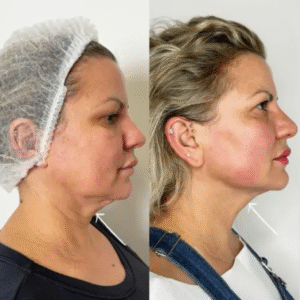Leg and calf pain is a common complaint encountered in clinics, physiotherapy practices and chiropractic centres throughout the UK. While sometimes mild and transient, persistent or severe pain can interfere with daily life—walking, standing or simple movement. Understanding the possible causes, recognising warning signs, and exploring appropriate treatments are key steps toward relief and recovery.
What Do We Mean by “Leg & Calf Pain”?
When we talk about leg and calf pain, we refer to discomfort anywhere from the thigh down to the ankle, but most often concentrated in the calf (the back of the lower leg). The pain may be constant or intermittent, dull or sharp, accompanied by swelling, stiffness, tingling or weakness. In many cases, calf pain may occur in isolation; in others, it may be part of a broader pattern of symptoms including hip, knee or lower back involvement. Proback Advanced Back Care
Because the musculoskeletal system works as an integrated chain (from the back, pelvis, hips, knees to ankles and feet), what feels like “calf pain” can sometimes be referred from other segments of that chain. For instance, nerve compression in the lower back—such as sciatica—can lead to pain radiating into the calf.
Common Causes of Leg and Calf Pain
A variety of factors, sometimes acting together, can give rise to leg or calf pain. Below are some of the more frequent causes, with examples relevant to everyday life in the UK:
1. Muscle Strains
Overexertion, sudden movements, or overstretching can injure muscle fibres in the calf or surrounding areas. You might notice sharp pain, local swelling or stiffness, especially when trying to move or flex the leg.
2. Tendinitis in the Ankle or Knee
The tendons around joints (such as Achilles, patellar or peroneal tendons) can become inflamed from excessive repetitive loads. This is particularly common among runners, footballers, or those who quickly increase training intensity.
3. Flat Feet (“Dropped Arches”)
Not all feet have optimal arch support. Flat or dysfunctional arches place added strain on muscles, ligaments and connective tissues from foot to calf. Over time, this can lead to inflammation or overuse injuries like plantar fasciitis.
4. Baker’s Cyst
A Baker’s cyst is a fluid-filled swelling behind the knee, usually arising from underlying knee joint problems such as arthritis. If it ruptures, fluid may leak into the calf area, causing swelling, sharp pain or discomfort.
5. Compartment Syndrome
This is a more serious condition. The muscles in the leg are divided into “compartments,” enclosed by fascia. After trauma or injury, swelling or bleeding can increase pressure inside these compartments, reducing blood flow and causing severe pain, tightness or tenderness. In acute cases, it may require urgent surgical intervention. Chronic compartment syndrome may manifest during exercise and recede with rest.
6. Shin Splints
Often seen in runners or those who suddenly increase load, shin splints are pain along the front or inner side of the lower leg (tibia). While technically not calf pain, the discomfort may extend downward and manifest in connection with calf muscles.
7. Nerve Compression or Referred Pain from the Spine
Issues such as slipped discs, misalignment, or nerve impingement in the lumbar spine can give rise to referred pain down the leg (sciatica). Sometimes the primary symptom is felt in the calf, even though the root is in the back.
Recognising the Symptoms: When Should You Be Concerned?
The spectrum of symptoms fluctuates from mild discomfort to severe debilitating pain. Some common indicators include:
-
Persistent leg or calf pain, either constant or with movement
-
Sharp or shooting pains, often travelling down the leg
-
Tingling, pins-and-needles sensations or numbness
-
Weakness in the leg, making walking or standing difficult
-
Swelling or visible inflammation
-
Associated hip, knee or ankle pain
-
Changes in gait or limping to avoid pain
If pain is severe, worsening, or accompanied by sudden swelling, redness or skin changes, or if you have underlying health conditions (such as vascular disease or diabetes), seek medical attention promptly.
Diagnostic Approach in the UK Context
In a UK clinic or physiotherapy setting, the assessment would typically include:
-
Medical History & Symptom Questionnaire — What triggers the pain? When did it start? What makes it better or worse?
-
Physical Examination — Looking at alignment, muscle strength, flexibility, range of motion, gait analysis, and neurological tests (nerve reflexes, sensation).
-
Imaging or Diagnostics — If needed, an X-ray, MRI or ultrasound may be requested to evaluate tendon, joint or disc involvement.
-
Functional Tests — The clinician may test foot arches, joint mobility, balance, and look for mechanical dysfunction in the kinetic chain.
Treatment Options: A Multi-Modal Approach
Treatment is more effective when targeted at the root cause, not just the symptom. Many clinics—including those practising chiropractic, osteopathy, sports therapy—use combinations of therapies. Below are some common treatment modalities:
Laser Therapy (e.g. K-Laser)
This involves using light energy at a cellular level to stimulate healing, reduce inflammation and promote tissue regeneration. It can be effective in managing localised tissue injury, strains, sprains or chronic inflammation.
Shockwave Therapy
Shockwave (extracorporeal shockwave therapy, or percussive therapy) delivers pulses to tissues to promote blood flow, break down scar tissue, and improve joint and muscle function. It’s often used for tendon injuries or deeply embedded soft tissue problems. Proback Advanced Back Care
Spinal Decompression
If the pain is traced back to a disc or nerve issue in the lower back, spinal decompression (a non-surgical gentle traction method) may help relieve pressure and allow recovery of the impacted nerves.
Manual Therapies, Mobilisation & Manipulation
Chiropractic or osteopathic adjustment, joint mobilisation or soft tissue techniques may help restore proper alignment, reduce tension and correct biomechanical patterns.
Rehabilitation & Strengthening Exercises
Once acute pain is under control, a tailored programme of stretching, strengthening and movement correction is often crucial for long-term resolution. Addressing weak muscles, correcting posture or gait, and ensuring muscle balance throughout the chain (back, hips, legs, feet) helps prevent recurrence.
Footwear Advice & Orthotics
Using supportive footwear and, where indicated, orthotic insoles can reduce biomechanical stress on the arches, calves and knees. For people working long hours on hard surfaces (e.g. concrete floors), better support is often essential.
Prevention and Self-Care Strategies
-
Warm up and cool down before and after exercise
-
Gradually increase intensity & distance rather than abrupt jumps
-
Use proper footwear suitable for your activity and foot type
-
Incorporate cross-training to reduce repetitive load
-
Strengthen supporting muscles (calves, hamstrings, glutes, core)
-
Stretch regularly focusing on calves, hamstrings and hip flexors
-
Monitor workload and give your body rest days
When to Seek Medical Help
You should seek prompt medical advice if:
-
Pain is rapidly worsening or unbearable
-
There is significant swelling, redness, heat or skin changes
-
Signs of deep vein thrombosis (DVT): sudden calf swelling, throbbing pain, skin discoloration or warmth
-
You experience loss of sensation, weakness or bowel/bladder disturbance (rare but serious)
-
You have a known medical condition like vascular disease, diabetes or autoimmune disorders
What to Expect in the UK Healthcare Environment
In the UK, patients may access general practitioners (GPs) initially, who can refer to physiotherapy or musculoskeletal specialists. Private chiropractic or osteopathy clinics also provide direct access without referral. Many clinics offer combination therapies (laser, shockwave, adjustment, rehabilitative exercise). In the private sector, consultation fees vary — for example, ProBack advertises a consultation price of £110 which includes examination, and X-ray if needed.
Because the NHS has limited capacity for advanced or elective therapies, many patients opt for private care to expedite assessment and begin tailored treatments sooner.
Conclusion
Leg and calf pain is neither uncommon nor trivial. Often the discomfort originates from simple mechanical dysfunction or overuse injuries, but occasionally it signals deeper structural or neurological issues. The path to recovery begins with accurate diagnosis, followed by a combined approach: targeted therapies, movement correction, rehabilitation and preventative measures.
If you’re based in the UK and struggling with persistent leg or calf discomfort, don’t ignore it. A consultation with a specialist in musculoskeletal care—be it physiotherapy, chiropractic or osteopathy—can uncover the root cause and set you on the road to recovery.
If you like, I can localise treatment providers, or suggest an easy UK-friendly home exercise programme. Would you like me to include that?




